Shevlin Sebastian's Blog, page 89
June 14, 2016
A Touch Of Italy On The Kerala Coastline
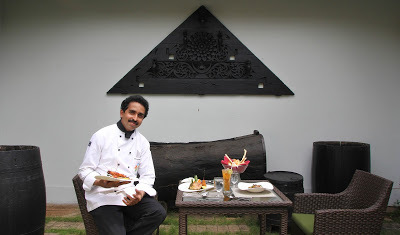
 The Aromi Di Italia, at Cherai Beach, with its authentic cuisine, is rapidly gaining in popularity
The Aromi Di Italia, at Cherai Beach, with its authentic cuisine, is rapidly gaining in popularityPhotos: Soju Philip, Executive Chef-food production; a lobster dish. Snaps by Albin Mathew
By Shevlin Sebastian
On an April night, IT professional Sarat Chandra, 39, decided to have his meal on the first-floor verandah, of the Aromi Di Italia restaurant, run by Club Mahindra, at Cherai beach [25 kms from Kochi]. “It was a full-moon night,” he says. “From where I was sitting I could see large waves hit the beach. There was a strong breeze blowing, and the sky was filled with stars. The ambience was so beautiful.”
While his children Nishita, 7, and four-year-old son Virat played nearby, Sarat and wife Bharti placed the order for a soup: Patate E Porri Zuppa Con Pollo Rosmarino – thick soup, with leek potato, and roasted rosemary chicken.
A few minutes later, when the soup arrived, Sarat noticed one telling difference. “Unlike, in most restaurants, they did not mix cream with the soup,” he says. “It was original stuff all the way and very tasty.”
Thereafter, he had the Penne Shrimp Alfredo – pasta, with shrimps and white cream sauce. “The shrimps were fresh, and, I was told, it was sourced locally,” he says. “Since we live in Hyderabad, we do not have the opportunity to have fresh sea food.” This was followed by fried chicken fillet served with sautéed zucchini, tomato, red peppers, and potato chips. “The beauty of authentic Italian food is that it is so light on the stomach,” says Sarat. “We enjoyed ourselves.”
Soju Philip, Executive Chef-food production, is not surprised.
“The Italian cuisine is known for its simplicity,” he says. “Every dish has, unlike Indian food, just four or five ingredients – tomatoes, onions, garlic, olives, cheese and herbs like basil and rosemary. But the cornerstone is olive oil. We have selected the cuisine of the southern part of Italy, like Capri, Sardinia, Sicily and Naples, which borders the Mediterranean Sea, because it is regarded as one of the healthiest diets in the world. Nowadays, people are looking for health options.”
One healthy dish is the Pesce Bianco Al Spinaci. This is a fish, roasted with extra virgin oil, along with vegetables, olives, lemon, spinach and topped with pesto – a basil and garlic sauce. It is spare and light, yet with a distinctive flavour.
However, interestingly, nowadays, many of the guests are opting for vegetarian fare. So the Aromi Di Italia offers pasta with vegetables and cheese, or pan-fried aubergine slices layered with Parmesan cheese and tomato sauce.
But the most popular item, among the veggies, is not pasta. Instead, it is a corn meal cake. “We cook powdered corn with butter and milk,” says Soju. “Salt and pepper are added. Then it is placed in a tray so that it can settle down. Later, we cut it into fancy shapes. Thereafter, it is grilled in butter, along with sauce.”
Guests come from Kochi and the nearby towns like Kodungallur. “We also get a lot of Westerners who are keen to try our seafood, like shrimps and prawns,” says manager Shinow Baby.
And they like what they eat. Danish tourist Foogen Oruteft says, “The food was very good. It is a very good idea to have an Italian restaurant at Cherai.” Dr. Jose Ukken from Kodungallur says, “Loved the fish.”
But even in an Italian eating-place, there is a demand for rice. So the staff provides the patrons with an Italian rice called arborio. “It is similar to our Basmati rice,” says Soju. “To the rice, we add chicken stock, cream, milk, and Parmesan cheese. Then it is cooked, till it becomes like a thick porridge. It can be a full meal if you add chicken, vegetables or seafood.”
Meanwhile, Soju, as well as the Chennai-based corporate chef, Dr. P Soundararajan, and his team, are planning to add new items. “We want to make a classy menu that will appeal to everybody,” says Soju, about the six-month old restaurant.
(Sunday Magazine, The New Indian Express, South India and Delhi)
Published on June 14, 2016 00:10
June 12, 2016
With Tushar Gandhi
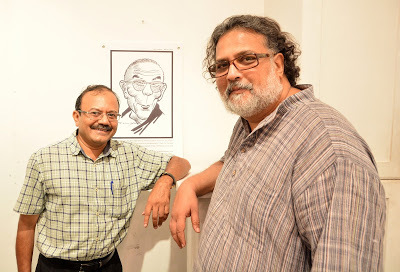 Thanks to the Friends of Tibet, Tushar Gandhi, the great-grandson of Mahatma Gandhi, came to Kochi to give a speech on Gandhism. It was a one-hour speech and not a moment of boredom: scintillating and inspiring, to say the least, and a much-needed one during these divisive times. When we were looking for a place to pose, it was he who suggested that we stand on either side of a caricature of the Dalai Lama.
Thanks to the Friends of Tibet, Tushar Gandhi, the great-grandson of Mahatma Gandhi, came to Kochi to give a speech on Gandhism. It was a one-hour speech and not a moment of boredom: scintillating and inspiring, to say the least, and a much-needed one during these divisive times. When we were looking for a place to pose, it was he who suggested that we stand on either side of a caricature of the Dalai Lama.Unlike Gandhiji, he is big-built. In his speech, he recounted how when he went to a school in Ahmedabad, he was introduced to a group of Class 6 students. One girl stood up and said, "Miss, he cannot be Gandiji's great-grandson. I think he is a wrestler."
A big thanks to colleague Ratheesh Sundaram for the snap.
Published on June 12, 2016 23:15
June 8, 2016
On The High Seas
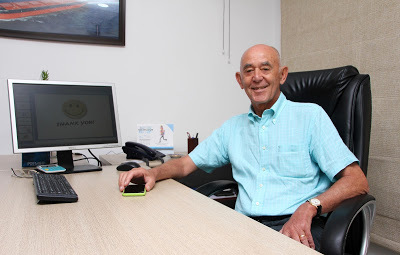
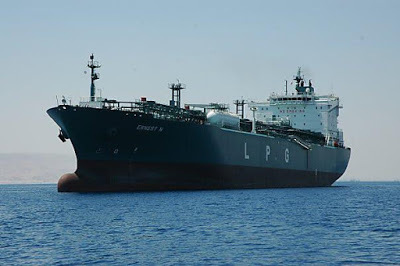 Peter Cremers, the executive chairman of the Hongkong-based Anglo-Eastern group talks about shipping, and other matters, while on a recent visit to Kochi
Peter Cremers, the executive chairman of the Hongkong-based Anglo-Eastern group talks about shipping, and other matters, while on a recent visit to KochiPhotos: Peter Cremers by Albin Mathew; an oil tanker
By Shevlin Sebastian
On a Friday morning, the staff at the Anglo-Eastern Ship Management Company, at Kochi, are dusting the top of tables, adjusting chairs, and ensuring that everything is spick and span. This is moments before the impending arrival of the Belgian-born Peter Cremers, the executive chairman. He is on his first visit to Kerala.
The Hongkong-based group has 26,000 employees on its rolls and controls a fleet of 600 ships. “Our job is to manage a ship,” says Cremers. “We don't own it, nor the cargo. We provide the technical know-how, as well as the staff. In other words, we are the world's largest ship manager.”
The majority of the staff are Indians, followed by Filipinos, Chinese and Ukrainians. The company has training centres in Delhi and Mumbai, as well as Manila and Odessa. In India, a one-year training is given for engine, deck and electrical officers. Thereafter, they work as a cadet for two years, before they are absorbed into the company.
But Cremers admits it is not easy for people of different nationalities to work together. “It is important to understand and respect each other's cultural backgrounds,” he says. “If you think 20 individuals, on board a ship, with ten nationalities, are all the same, then you are wrong. Part of our business is to understand how a Filipino or an Indian or a Chinese works and thinks. We never forget that we are not employing robots, but human beings.”
And these human beings did go through several life-threatening situations, because of the threat of hijacking by Somali pirates a few years ago. But the threat has disappeared. “The moment we were allowed to put armed guards on board, it has proved to be a deterrent,” says Cremers.
Apart from the dangers from hijacking, accidents do take place on board. “A ship is a relatively hazardous environment,” says Cremers. “Everything is made of steel. You can trip and break a leg. There are heavy weights being moved around all the time. A major accident can also take place, But, having said that, we have the best safety record of any company, with less than 1 per cent of accidents in a year. We are always conducting safety programmes on board. It is one of our major drives.”
Incidentally, some of the vessels which the company handles include oil tankers, container ships, dry bulk carriers, and pipe-laying barges.
Meanwhile, when asked to provide leaderships tips, Cremers says, “I have made sure that I have, around me, very competent people. You cannot do everything yourself. You should also be a good person, a fair boss, and ensure that the company has a singular vision, which has to be transmitted to every employee.”
Asked about his vision, Cremers says, “It is very simple: to be the best in the world. In our industry we want to be at the top. And I believe we are.”
Interestingly, the company has won several Compassionate Employer awards. “We always do right,” says India operations managing director Captain Vinay Singh. “We follow the book. We never cheat anybody. We try to help people. We run an NGO in Kochi, which is helping the local orphanages.”
Adds Maneesh Pradhan, senior general manager, “If any employee is in need, we go beyond the rules. And try to help them, especially, if they have a problem within their families. We provided relief during the Chennai floods by starting a food centre, 24/7.”
Asked about his 24/3 experience in Kerala, Cremers says, “I liked it. Kerala gave me an European feel, because of the churches and the greenery. It has its own character. At some places, I thought, 'Am I in India?'”
(The New Indian Express, Kochi and Thiruvananthapuram)
Published on June 08, 2016 23:04
June 7, 2016
Slithering Snakes!
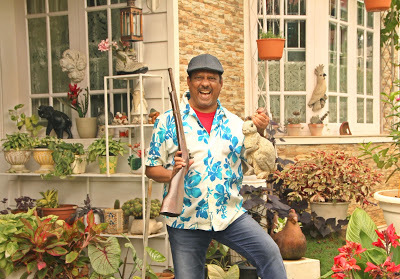 COLUMN: LOCATION DIARY
COLUMN: LOCATION DIARYActor Kunjan talks about his first experience before the camera, as well as the film, 'Sambhavam'
Photo of Kunjan by Albin Mathew
By Shevlin Sebastian
In October, 1967, actor Kunjan was leading a quiet life working in an office in Coimbatore. One day, he befriended a man named Shanmugham, who made documentaries, which were screened abroad.
Shanmughan asked him whether he would act in one of his documentaries. Kunjan was hesitant. He had no experience of acting. But Shanmugham said he would be paid Rs 250 for his efforts. “In those days, that was a lot of money,” says Kunjan, at his home in Kochi. “So I agreed.”
The next morning, a Plymouth car came to collect Kunjan from his house. From there, they travelled to Mettupalayam, 33 kms away. The shoot was supposed to take place next to a temple. Shanmugham was waiting patiently.
As soon as Kunjan arrived, he was asked to take off his shirt. Then his hands and legs were tied. Kunjan was made to lie on the ground. Suddenly, a few men brought a number of baskets next to him. When it was opened, Kunjan was shocked.
These contained snakes and they were placed all over his body. Soon, one python enveloped Kunjan so tightly, he was finding it difficult to breathe.
“I was in a state of shock,” says Kunjan. “It was like being in a bed of noodles. There was also a terrible smell.”
A fearful Kunjan told Shanmugham, “Sir, please free me. I don't want the money.” But Shanmugham ignored Kunjan and continued shooting.
When it was over, Kunjan had a splitting headache. After he got the money, he felt very hungry. So he went to a hotel at Coimbatore, and had a plate of chicken biriyani.
While he was doing so, he noticed an eruption on his skin, along the forearm. After a while, the same mark appeared on his other hand.
“I thought it had something to do with my encounter with the snakes,” says Kunjan. Immediately he consulted with Prakash, a homeopathic doctor. “He told me it was chicken pox,” says Kunjan. “The stress, fear, tension, and body heat had made the pox erupt.”
In the end, Kunjan stayed in bed for 28 days. “Apart from the Rs 250 from Shanmugham, I had to borrow another Rs 250, from a friend, to pay for the treatment,” says Kunjan. “So, finally, I did not gain anything.”
Eventually, Kunjan entered Mollywood, and has acted in 650 films till now.
In 1981, during a break in the shooting of 'Sambhavam', which starred Madhu, Srividya, and Adoor Bhasi, Kunjan finished his dinner at the Hotel International, at Kochi, along with producer Ravi Menon.
When they came out, to go to the Bharat Tourist Hotel, where they were staying, they noticed that it was raining heavily. So, one of Ravi's friend, Sooraj (name changed) offered to take them. While Kunjan sat in front, Ravi was at the back.
On MG Road, near Maharaja's College, a lorry hit the car head-on. “The door was hanging from my arm,” says Kunjan. “There were cuts on my legs and arms. And I was bleeding from my face. Ravi's lip had split open. He had hit the seat in front.”
Kunjan managed to get out of the car. He saw an autorickshaw driver and asked him to take them to the nearest hospital.
But the driver said, “Please allow me to look at you for some time. This is the first time I am seeing a star.”
Says Kunjan, “In those days, people were crazy about actors. It is only now that because there is so much of shooting taking place in Kochi that people have got used to seeing the stars.”
The driver finally took the three of them to the Medical Trust hospital. At the intensive care unit, it was discovered that there were some glass pieces stuck to Kunjan's body. When it was being taken out by the nurse, Kunjan moaned in pain.
When the nurse saw that, she said, with a smile, “Acting in films and acting in the hospital, too.”
(The New Indian Express, Kochi, Thiruvananthapuram and Kozhikode)
Published on June 07, 2016 22:33
June 5, 2016
Plant A Sapling, Grow A Tree
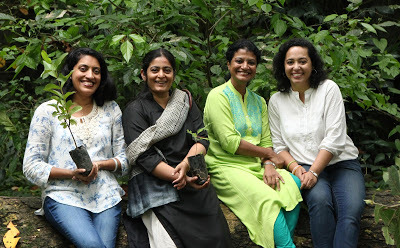
Photo: (From left): Manju Mathew, Rose Paul, Bobby Antony and Sumi Thomas. Pic by Albin Mathew At the Ted Talks at Vancouver, in February, Bhutanese Prime Minister Tshering Tobgay said, “72 per cent of our country is under forest cover. And all that forest is pristine. That is why we are one of the few remaining global bio-diversity hotspots in the world. Out of 200 countries, we are the only one that is carbon-neutral. Through our Green Bhutan movement, we are planting trees throughout the country.”(Sunday Magazine, The New Indian Express, South India and Delhi)
Published on June 05, 2016 21:44
June 2, 2016
Painted On Stone

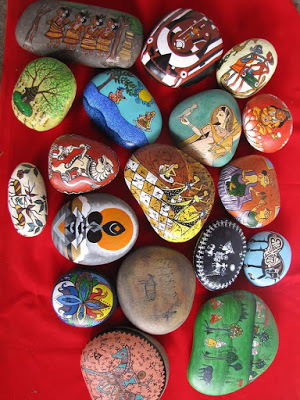 Sreeja Pillai's exhibition has featured different artistic styles, but all have been done on small stones
Sreeja Pillai's exhibition has featured different artistic styles, but all have been done on small stones Photos: Sreeja Pillai by Mithun Vinod; stone paintings
By Shevlin Sebastian
Artist Sreeja Pillai was doing some research for a book on the history of art when she realised that, in ancient times, before the advent of canvas, people did paintings on stone.
“They would capture their day-to-day life on rocks, and on the walls of caves,” she says. “Sometimes, they would use the blood of animals or use different types of mud. The origin of painting is stone. So I decided I would go back to the beginning.”
So Sreeja began collecting stones from the bottom of lakes, ponds and rivers near her home in Thrissur. “It was not easy,” she says. “I also arranged for stones to be sent to me from Kozhikode, as well as Andhra Pradesh and Pondicherry."
The stones varied in size, from 3 1/2 inches to 9” long. They were in different shapes: round, oblong, egg-shaped, and square. But when Sreeja started work, she realised that it would take a long time. “That's because I was doing miniature paintings,” she says.
In her daily life, Sreeja is a drawing teacher at the Harisree Vidyanidhi school. So, she usually started work, on her paintings, only at 9 p.m., after her eleven-year-old son had gone to sleep. And she worked late into the night.
But Sreeja has been following a specific plan. She would take one style each from the twenty-plus states in India. “In Kerala, the most traditional art form has been the mural painting,” she says. “So I have done works in that style.” She has also done Santhal, Assamese, Bhil, Deccani, Kalamkari, Worli Rajasthani, and Gond styles.
“The Gond paintings of Madhya Pradesh usually have animals as their subjects,” says Sreeja. After she completed 130 paintings, she held an exhibition recently at the Kerala Lalitkala Akademi in Thrissur called 'Luminous-4'.
“The presentation is very important,” says Sreeja. So, the stones have been placed against blue, green, red, saffron and pink cloth on a specially-designed wooden stand. Before each stone is the name of the painting and the state from which it has originated. One section was focused on the faces of members belonging to various tribes. “It was only after doing the paintings that I realised the immensely rich heritage of India,” she says.
Meanwhile, those who saw the exhibition liked it. Says Kochi-based artist PR Unnikrishnan: “Sreeja's work is different, as compared to other artists. She is carrying on a 6000-year-old tradition of stone art. Sreeja has done a lot of research and that is reflected in her works. It is a commendable effort.”
(The New Indian Express, Kochi and Thiruvananthapuram)
Published on June 02, 2016 00:44
May 31, 2016
'Java is simple, powerful and robust'
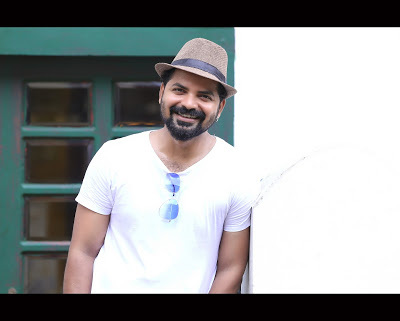
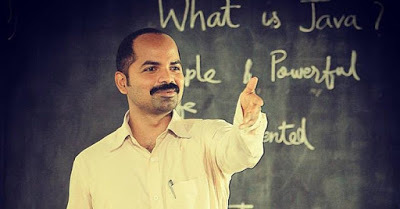 COLUMN: LOCATION DIARY
COLUMN: LOCATION DIARY Actor Vinay Forrt talks about his experiences in the films, 'Premam' and 'Shutter'
Photos: Vinay Forrt; as teacher Vimal in Premam
By Shevlin Sebastian
At the location shoot, at UC College, Aluva, for the film, Premam, in January, 2015, director Alphonse Puthren gave a piece of paper to actor Soubin Shahir, on which was written a definition of the Java software. He then asked Soubin to memorise it so that he could teach a class the next day.However, Soubin pointed at actor Vinay Forrt and told Alphonse, “When people look at Vinay, they will feel that he is a bit educated. On the other hand, I don’t look like a teacher at all. So I will become the PT instructor, while Vinay can play my role.”And that was how Vinay played Vimal Sir. But when Vinay saw the dialogue, he told Alphonse that the definition of Java was not interesting. Agreeing with the actor, Alphonse allowed Vinay to improvise. When the shoot began, Vinay opened a textbook and said, “Java is simple. It is powerful. It can be robust, too.”A student suddenly said, “Sir, is it like the Robusta (banana)?” Immediately, all the students started laughing. However, Vinay felt puzzled. Alphonse was supposed to call ‘Cut’, a minute into the shoot, so that George (played by Nivin Pauly) and his friends could barge into the class. “But Alphonse did not say anything,” says Vinay. “In the end, the entire sequence appeared on screen and became one of the most popular scenes.”So, popular did it become, that when people met Vinay, they would call him Java. “I had done 25 films before Premam,” says Vinay. “But it is this one sequence that established my name. Before that, I played serious and intense roles, and people stayed away when I moved around in public. But after Premam, people found it easy to approach me.”Again, in Premam, Vinay had a scene where he sang a Tamil song, ‘Ennavale Adii Ennavale’, during the college festival. At the conclusion, he clutched the mike, got an electric shock, and fell to the ground. However, when the shoot was going on, Naresh (name changed), the man who supplied the mike, ran to the stage and shouted, “There is nothing wrong with my mike. It worked perfectly well till yesterday. It is not my fault.”It took a while to calm Naresh down and tell him that this was part of the script, and Vinay had not suffered an electric shock. Meanwhile, the crew had a big laugh.Vinay had a completely difference experience during the shoot for Shutter (2012). He played an auto-rickshaw driver, Nanmayil Suran, who locked his friend, businessman Rashid (played by Lal), and a prostitute inside a room, which had a shutter, so that they could experience bliss. Unfortunately, soon after, Nanmayil is picked up by the police and locked up. As a result, he could not open the shutter. When he was released, the next afternoon, he looked disturbed. To show that mood, a scene was set up on a railway bridge, up a steep stone embankment, with water on both sides, in Kozhikode. “A camera was tied to my body, facing my face,” says Vinay. A red towel was placed around his shoulders. The only other person present was Hari Nair, the director of photography. Vinay started walking beside the track. A train came from behind. It went past with such speed that the towel rose up and enveloped Vinay’s face.“This turned out to be one of the best scenes in the film,” says Vinay. “People were sitting on the edge of their seats. They were wondering what was going to happen to me. Was I going to commit suicide? When we were shooting the scene, we had no idea of how it would turn out. But now I know that, sometimes, the best scenes happen when we least expect it.”(The New Indian Express, Kochi, Thiruvananthapuram and Kozhikode)
Published on May 31, 2016 23:53
May 30, 2016
The Kingdom Of Heaven
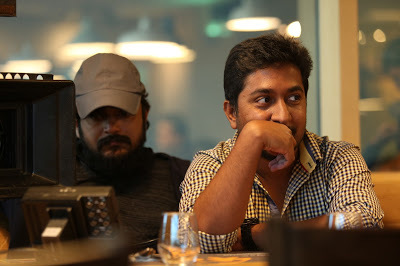 Director Vineeth Sreenivasan talks about his super-duper hit, 'Jacobinte Swargarajyam'Photo: Vineeth Sreenivasan (right) with cinematographer Jomon T John
Director Vineeth Sreenivasan talks about his super-duper hit, 'Jacobinte Swargarajyam'Photo: Vineeth Sreenivasan (right) with cinematographer Jomon T John By Shevlin Sebastian
In December 2013, scriptwriter-director Vineeth Sreenivasan, 30, received a WhatsApp photo from his friend Gregory Jacob. It was an image of a family get-together and the caption read: ‘Finally’.
The Jacob Zachariah family—husband, wife, three boys and a girl—lived in Dubai. A financial swindle by a business partner made Zachariah lose millions and the family went into a crisis. He went to Liberia to explore work opportunities, while his eldest son, Gregory, along with his mother, tried to clear the debts by running businesses of his own. It took five years for the family to re-unite in Kerala.
“When I looked at the photo I realised how much Gregory had wanted this meeting,” says the director, who knew the back-story. “Because of our busy lives, many of us may not find the time to call or go home. This forgetfulness happens unknowingly. I felt that it would make a good film.”
Released last month, Jacobinte Swargarajyam has become a superhit, with a box office collection of `22 crore and rising. It stars Nivin Pauly, Renji Panicker, Lakshmy Ramakrishnan, Sai Kumar and Sreenath Bhasi. It is a film that a smiling 12 year-old Subin liked, just outside the PVR Cinemas, at the Lulu Mall, Kochi, as well as his 90-year-old grandfather.
Asked how he could make a film that appealed to youngsters and the elderly alike, Vineeth says, “Each character has a unique behaviour. Take Abin Jacob (Bhasi). He is a rebellious 19-year-old, who likes to have a drink and move around with friends. Many teenagers, who saw the film, told me they could relate to Abin.”
Nevertheless, during the shooting in Dubai, Sharjah and Kerala, Vineeth had doubts. “When I am making a film, there is always a battle within myself,” he says. “One part of me says, ‘This is a good film and I have to do it’. But another part says, ‘This may not be entertaining, and not the type of film that people will expect from me’. These doubts persist till the end of the first show when I am able to get the audience reaction.”
So far, the audience response has been mostly positive. His films like Malarvadi Arts Club and Thattathin Marayathu have done well. He also wrote the script for the hit, Oru Vadakkan Selfie.
Meanwhile, during the shoot of Jacobinte Swargarajyam, there were moments of serendipity too. There is a scene where the mother tells Gregory that she had a dream where angels rested on his shoulders. “Both Jomon (T John, cinematographer) and I felt there has to be a magic in the scene, but we not could not find a solution,” says Vineeth.
As they were conversing on the 15th floor of a building in Sharjah, the sun began setting. “Through a gap between two buildings, the sunlight lit up our faces,” he says. “We instantly realised how the scene had to be shot: Sherly facing the camera and Gregory behind her, with the sunlight at the back. And we played ‘Latika’s Theme’ from Slumdog Millionaire, in the background.”
But, rather than Latika, it is Vineeth’s theme, in the film, that is a talking point among the cinema-goers of Kerala.
(Sunday Magazine, The New Indian Express, South India and Delhi)

Published on May 30, 2016 23:09
Wilting Grass, Leaves and Trees
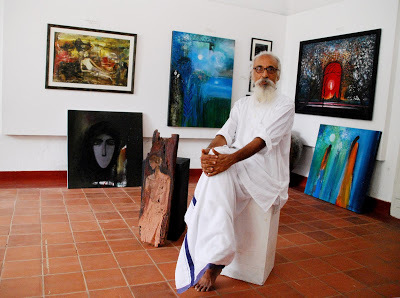 Paris Mohankumar's exhibition, 'Reverberations', focuses on the widespread environmental degradation in the world
Paris Mohankumar's exhibition, 'Reverberations', focuses on the widespread environmental degradation in the worldPhoto by K. Shijith
By Shevlin Sebastian
Later, when he into another house, he saw a wooden piece that was part of an old door. It had scratches, long embedded lines and a couple of holes. He took it home, and painted the figure of a woman on it, in a pastel shade, with the face turned sideways, and the hair held up in a bob. It was titled 'Rebirth'.
In many other paintings, he has shown wilting grass, leaves and trees. “In Wayanad, where I stay, factories are coming up and spoiling the landscape,” he says. “Most of the politicians are only interesting in making profits.”
Another endangered area is the Niligiri Biosphere Reserve. “I am told that more than 5000 acres are up for sale,” he says. “I am trying to highlight all this through my work.”
The gifted Mohankumar made a mark when he was a teenager through his paintings and sculptures. When a well-known monk, Swami Dayananda Saraswati asked him to do a scultpture of a Hindu god, Mohankumar was flummoxed. Because of his father's Communist leanings, there was no religion in the house. So, he consulted an encylopaedia which belonged to his father and did a bust of Socrates.
But when he displayed it to the monk, his followers were flummoxed.
“Everybody asked the guru, 'Who is this?',” says Mohankumar. “Swamiji replied that this is a 'God of Gods'.”
The impressed Saraswati invited Mohankumar to spend time at his ashram, which was just eight kilometres from his house at Mahe. Mohankumar went there and learnt meditation and yoga. Thereafter, he spent five years as a member of the Aghoris cult at Rishikesh. But all along, he was obsessed with art. And with the Swamiji's help, he went to Paris in 1974, and launched a successful career as an artist.
“My work has been shown in 40 countries,” says Mohankumar, who spent two decades in Europe. His high point was when he was honoured by UNESCO in 1988 as one of the 40 greatest artists in the world. Today, he is on a mission to encourage organic farming among the tribals in Wayanad.
“Mankind should realise it cannot survive, unless we nurture the environment,” says Mohankumar.
(Sunday Magazine, The New Indian Express, South India and Delhi)
Published on May 30, 2016 00:48
May 25, 2016
The Horse That Would Not Move Forward
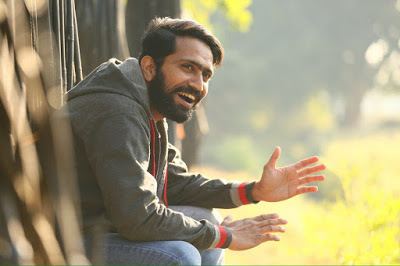
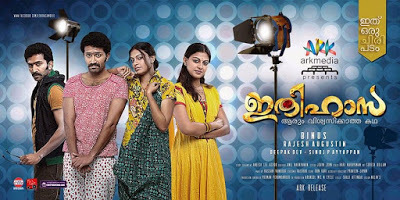 COLUMN: LOCATION DIARYActor Shine Tom Chacko talks about his experiences in the films, ‘Itihasa’, 'Annayum Rasoolum', and ‘Chapters’
COLUMN: LOCATION DIARYActor Shine Tom Chacko talks about his experiences in the films, ‘Itihasa’, 'Annayum Rasoolum', and ‘Chapters’By Shevlin Sebastian
In the film, 'Itihasa' (2014), actor Shine Tom Chacko, who plays pickpocket Alvy, robs a person, takes the money, and is walking away. Suddenly, the police come up behind him and say, “Hey Alvy.” Immediately Alvy starts running towards a beach. In the distance, he can see a brown-black horse. He runs towards it, climbs up, and kicks the sides, but the horse does not move.
“No matter how much I tried, the horse would not move,” says Shine. “So, the shooting came to a stop.”
Vishnu, the trainer, said that the horse, Lancer, should have a confidence that a person can ride him. “You need to have a proper balance while sitting on a horse,” said Vishnu. “Like the way you keep a balance when you ride a bike.”
So, Vishnu told Shine to bond with the horse. During breaks in the shoot, Shine fed Lancer some food. He also took the horse to the water's edge so that it could feel cool. “A horse communicates with humans through his eyes,” says Shine. “So, I looked at the horse, and said, silently, 'This is a good role for me. Please help me. We need to shoot this scene.'”
At the end of the day, Shine decided to make another attempt. This time, when he sat on the saddle, he kicked hard with both his legs. The horse slowly started moving forward. “That was when I realised that I had been kicking the wrong way earlier,” says Shine. Then Shine kicked again and it began to pick up speed. “But when I kicked a third time, Lancer began to go fast,” says Shine. “I began to feel confident. I realised that the kings of the past felt this same confidence when they rode a horse.”
In the end, director Binu S got a good shot.
Good shots were what cinematographer Rajeev Ravi thought he would get when he selected Shine to play the ruffian Abu in his debut directorial film, 'Annayum Rasoolum' (2013). “I had thick long hair,” says Shine. So the shoot was proceeding smoothly at Kochi. But Shine was finding it difficult to handle this mass of hair, because of the heat.
So, one evening, after the day's shoot was over, he entered an air-conditioned shop and told the barber to trim the hair at the edges. The barber agreed as he gave Shine a head massage. It was so good, that Shine went off the sleep. After a while, when he awoke the actor got a shock. “He had cut all my hair and made it short,” says Shine. “I cannot blame him since he did not know that I was acting in a film, and that it would affect the continuity of the sequences.”
Rajeev got a shock to see Shine the next day. But the director solved the problem by making Shine tie a handkerchief over his head. “Sometimes, gangsters have worn this, as a style statement,” says Shine. “Then, in a couple of scenes, he made me wear a cap. Sometimes, he placed my head at the edge of the frame, so there was no need to show my hair.”
But there was further tension. During one sequence, where Shine is running with a group of ruffians, near a church at Vypeen, he hit his hand on the church wall and broke two of his fingers. Following treatment, his hand was placed in a cast. Thereafter, whenever Shine was in front of the camera, Rajeev instructed him to put his fractured hand behind him, and vice versa when the camera was trained on his back.
From the shoot of 'Annayum Rasoolum', Shine went to the location of ‘Chapters’ at Vagamon where he was playing a ruffian by the name of Choonda. “Director Sunil Ibrahim solved the problem by making another character say that Choonda broke his hand in the bathroom,” says Shine. “Such are the adjustments that take place when shooting goes on.”
(The New Indian Express, Kochi, Thiruvananthapuram and Kozhikode)
Published on May 25, 2016 22:17



